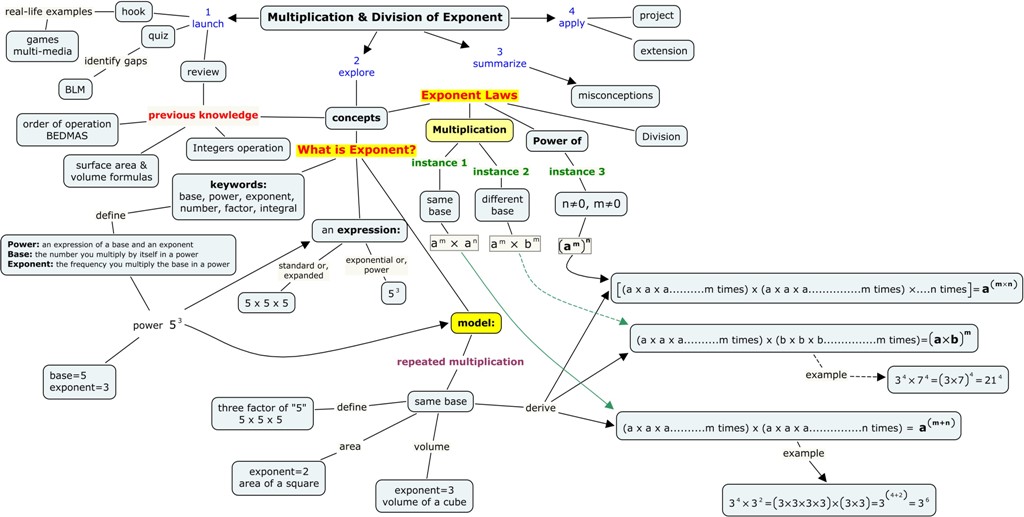What's in and what's out? What is the scope of our explanation and
illustrations in this blog?
Instances are what (examples, concepts) we consider to be in the scope, and non-instances are those outside the scope of
our discourse.
Our goal is to develop deep conceptual understanding and procedural fluency at exponents and multiplication of exponents. The table below provides
examples of various exponential forms (powers of) in the instances and
non-instances.
Scope: Multiplication of exponents
---------------------------------
Power (an expression of): Xy
base=X
exponent=y
pronounced as:
“X to the power of y,” or
“X to the y,” or
“yth power of X”
---------------------------------
Examples: 23, 42, 165,
1031
Model (for explaining instances): repeated
multiplication
Base:
positive integers (e.g., 1, 2, 3, 4, 5)
Exponent:
positive integers
---------------------------------
Examples: 05, -24, 6-3,
00, -e1.8, (-8/9)1/3 , 0.56-1/3
Model (for explaining non-instances):
repeated division, ...
Base: variables,
real numbers (e.g., -1, -22, -1/2, -5/9, 73/4, 3.142, p,
0.7, e, √2)
Exponent: negative
integers, fractional, decimals
.jpg)